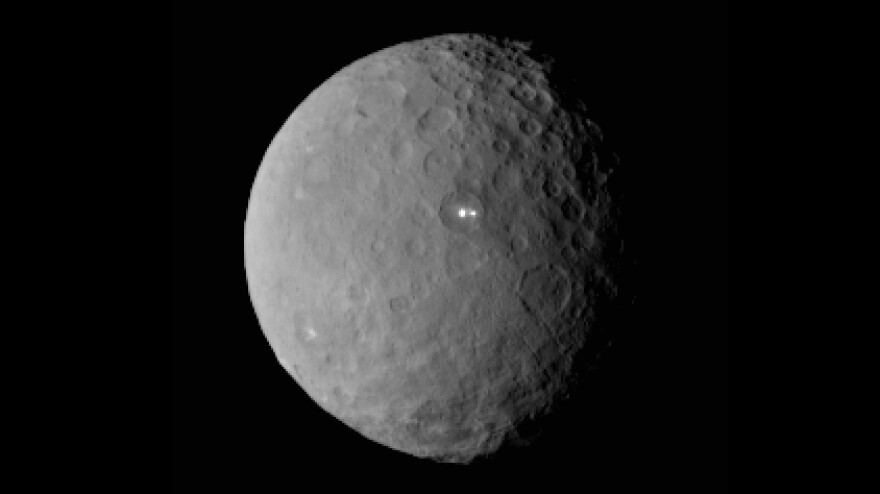New images of the dwarf planet Ceres give fresh detail to its most intriguing features: a cluster of bright spots that NASA says "gleam with mystery" and are intensely different from anything else on Ceres' surface.
Taken from fewer than 1,000 miles away, the images may finally help NASA figure out what's behind the brightness.
The images of Ceres, which is in an asteroid belt between Mars and Jupiter, were sent back to Earth by the Dawn spacecraft, with visual resolution that's nearly three times better than earlier images.
"Dawn has transformed what was so recently a few bright dots into a complex and beautiful, gleaming landscape," said Marc Rayman, Dawn's chief engineer and mission director based at NASA's Jet Propulsion Laboratory in Pasadena, Calif.
Rayman says scientific analysis will soon reveal the geological and chemical nature of "this mysterious and mesmerizing extraterrestrial scenery" in the Occator crater.
The Dawn spacecraft has been orbiting Ceres, which is roughly as wide across as Texas, since March. A plan to have it approach closer had been delayed by a technical issue with one of its engines.
The disparity between the bright spots and the surrounding topography is so distinct that NASA took two images at different exposures to capture all of Ceres' details, the agency says.
The images continue a zoom-in process that began 11 years ago, when the Hubble Space Telescope recorded an image of a white area on Ceres. The area went from being intriguing to being an utter mystery earlier this year when Dawn sent back an image that showed not one, but two distinctly bright spots.

That discovery prompted theories about what's causing the brightness. NASA has said possible answers include ice, a volcano or a salt deposit.
In the space agency's online survey about the possible cause — which doesn't include "Ancient alien civilization" as an answer — around 40 percent of respondents have chosen "Other."
Discovered in 1801, Ceres is the closest dwarf planet to Earth. It was once classified as an
Copyright 2021 NPR. To see more, visit https://www.npr.org.





